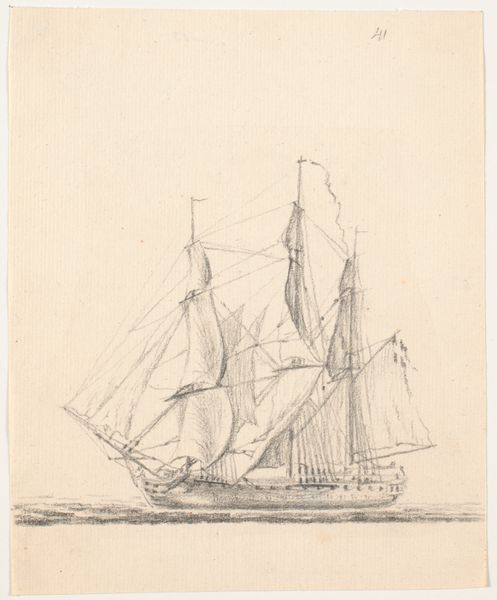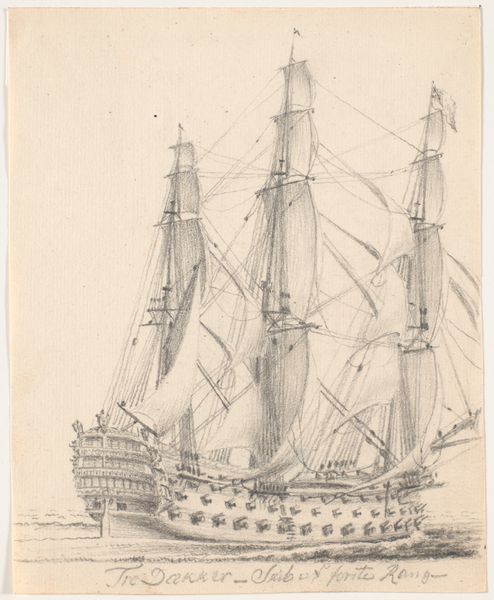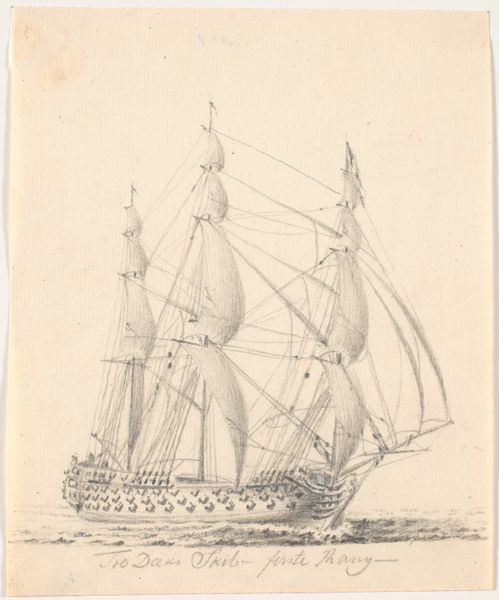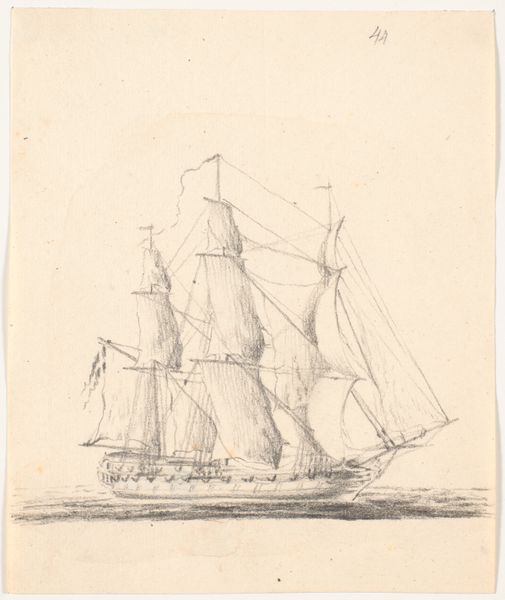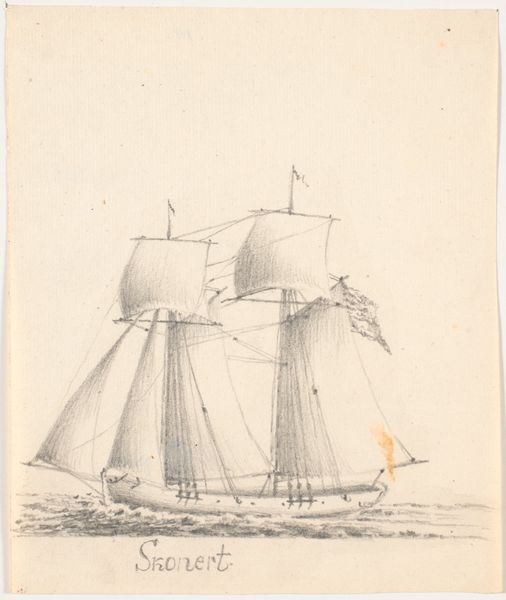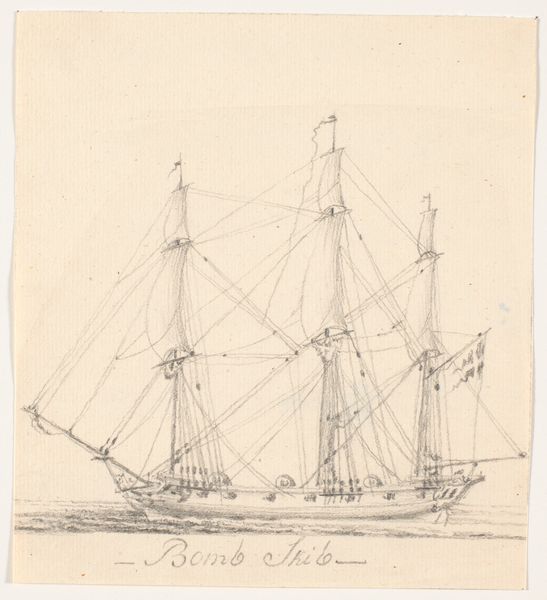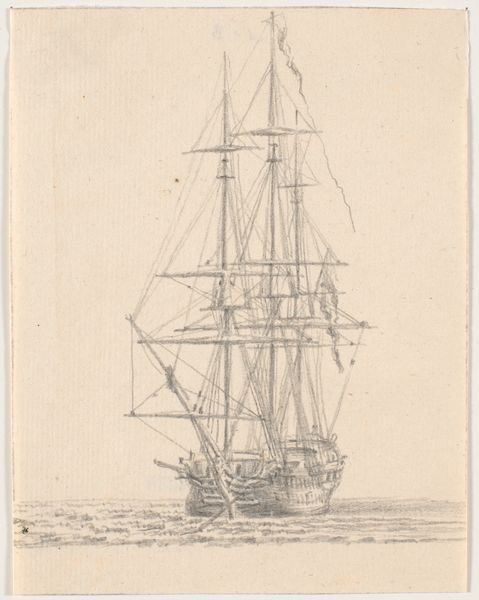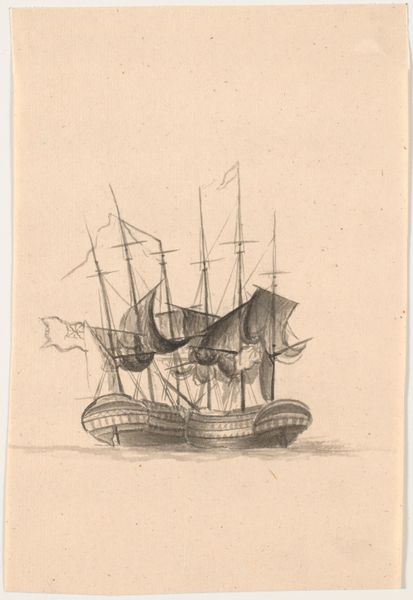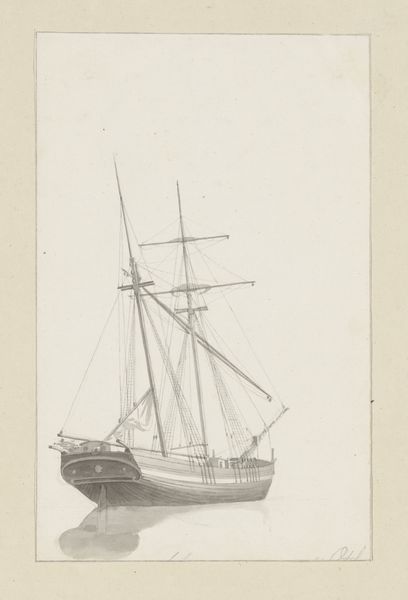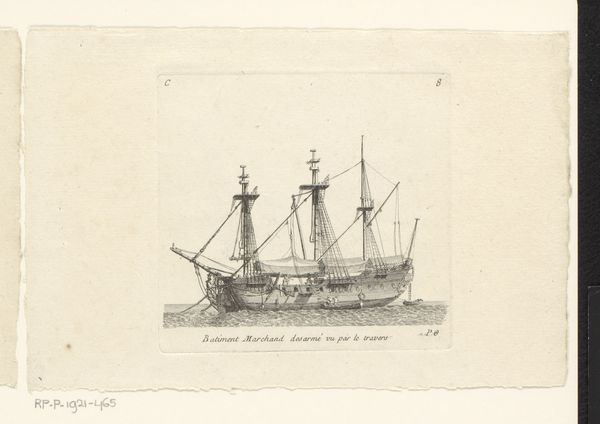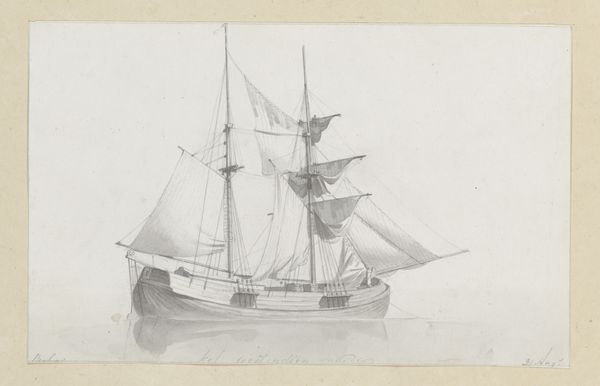
drawing
#
drawing
#
landscape
#
etching
#
line
#
realism
Dimensions: 197 mm (height) x 160 mm (width) (bladmaal)
Curator: The work before us, titled "Bomb Skib med topsejl," presents a captivating study of a ship. It’s attributed to C.A. Lorentzen and believed to have been created sometime between 1746 and 1828. What are your first thoughts? Editor: There's a stark simplicity to it, almost like a blueprint, meticulously capturing the ship's anatomy. I immediately see the lines detailing the rigging—they remind me of how thread dictates the drape and movement of fabric. Curator: The drawing really serves as a document of shipbuilding technology of the period, showcasing the intricate engineering required to build such vessels. It really gives insight into naval power and its role in 18th and 19th-century Denmark. Editor: Absolutely, and focusing on materials, one wonders about the quality of the paper itself— its origin and the process through which it was made—and how it might've been chosen to meet the artist’s meticulous goals. Also, I like how you touched upon the military power associated with a bomb ship because there is definitely an ideology around resources when depicting ships used for war! Curator: Considering Lorentzen's broader body of work, one sees how such detailed drawings played a vital role in art and naval training during this era. Think about the public perception – seeing a ship so precisely rendered could instill national pride and underscore the strength of the Danish fleet. Editor: It's almost technical. Considering this was made by hand, without mechanical printing to mass-produce the work, you think about the skilled labor necessary. It certainly reframes our ideas of 'art' and 'craft.' Curator: It’s a perfect encapsulation of a specific historical moment, inviting us to consider the social, political, and even technological dimensions of 18th-century maritime life. Editor: Yes, by focusing on the craftsmanship, the tangible history of the tools, the paper, and the skilled hand, we gain such a valuable perspective into our material relationship with it. It prompts questions of who has the privilege to represent these forms of power.
Comments
No comments
Be the first to comment and join the conversation on the ultimate creative platform.

